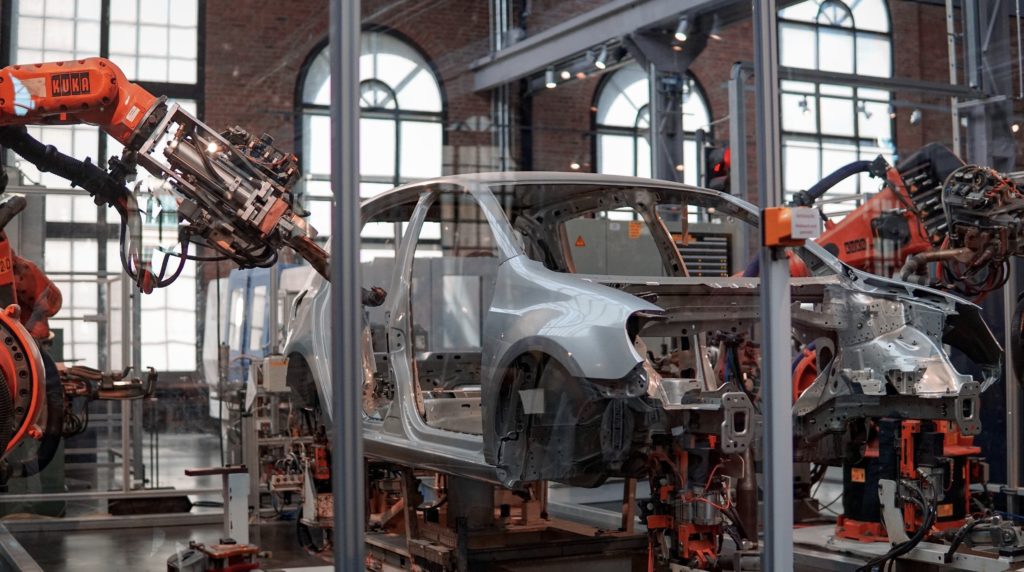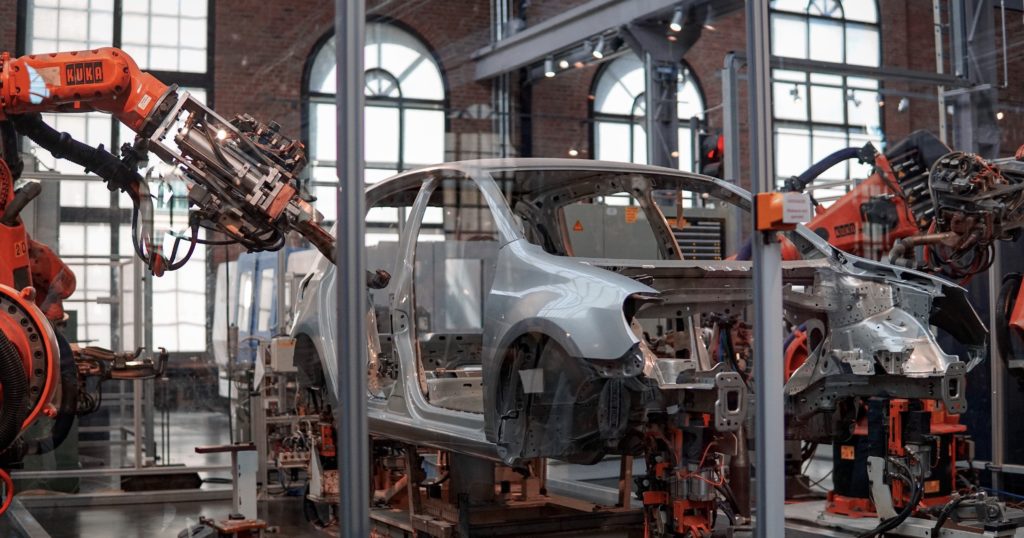 Intelligent Design
Intelligent Design
Book Excerpt: A Factory That Builds Factories That Build Factories That…


Editor’s note: The following is an excerpt from the the new book from Discovery Institute Press, Evolution & Intelligent Design in a Nutshell. Eric H. Anderson is a lawyer, software engineering executive, and writer on intelligent design.
Nobel Prize recipient and Harvard origin-of-life researcher Jack Szostak once remarked, “In my lab, we’re interested in the transition from chemistry to early biology on the early earth…. You want something that can grow and divide and, most importantly, exhibit Darwinian evolution.”1
Another noted origin-of-life researcher, Gerald F. Joyce, says much the same thing. When asked about the idea that chemicals might have come together on the early Earth to form something that could copy itself, Joyce responded, “That’s what we and others are interested in because that’s sort of, you know, the tipping point between chemistry before and biology after.”2
Self-replication, then, is not just one more in a long list of problems to be solved for the origin of life. As far as many of the leading origin-of-life researchers are concerned, discovering the pathway to a self-replicating entity is the central challenge, the Holy Grail. Figure out how to get that from purely natural processes, and the hope is that everything else will take care of itself.
But it’s a Grail that continues to elude the research community, despite the brash claims occasionally made to the contrary.
Dawkins’s Miracle Molecule
A few years ago I happened to turn on my car radio and caught the end of a lecture segment on public radio. Evolutionary biologist and prominent atheist Richard Dawkins was the guest. Dawkins held the position of Professor for the Public Understanding of Science at Oxford University for more than a decade, and one of the questions posed to him made me quickly reach over and turn up the volume.
“How close are we to understanding the origin of life?” the moderator asked.
I half-expected Dawkins to acknowledge the many difficulties with abiogenesis, to admit that this was a huge open question, and to confess that we don’t yet have any good abiogenesis scenarios, while claiming, as so many proponents of evolution do, that the origin of life is a separate question from biological evolution. That is, I thought he might concede the many widely acknowledged difficulties still facing the origin of life but try to contain the damage for the materialistic outlook by emphasizing that at least things were well in hand for evolutionary theory after the origin of the first life.
To my surprise, Dawkins responded rather glibly that we have a pretty good idea how life started. Yes, there are some challenges, he acknowledged, but we know what happened in broad strokes and at this point, he implied, we are basically filling in the details.
Having studied the origin of life at length and being aware of the many and acute problems with abiogenesis theories, it struck me as more than a little irresponsible for someone wearing the title of “Professor for the Public Understanding of Science” to claim in a public venue to tens of thousands of listeners that we have a pretty good idea how life started.
Why would Dawkins make a statement like that? Was he purposely misinforming listeners about the current state of the science, or was he unaware of the many problems with abiogenesis? Did he really believe what he was saying?
As I analyzed the question further in the coming days, I realized that Dawkins’s thinking likely stems from the notion that the origin of life — at least the initial starting event — was a relatively simple event. Not necessarily a common event or an easily repeatable event, mind you, but a relatively simple one.

In his book The Selfish Gene, Dawkins paints a picture remarkably similar to Darwin’s statement in his 1871 letter to Joseph Hooker (quoted in the previous chapter). “Nowadays large organic molecules would not last long enough to be noticed: they would be quickly absorbed and broken down by bacteria or other living creatures,” Dawkins writes. “But bacteria and the rest of us are late-comers, and in those days [on the early Earth] large organic molecules could drift unmolested3 through the thickening broth.”4
With this assumed backdrop of early Earth conditions, Dawkins goes on to suggest the first key step in the origin of life: “At some point a particularly remarkable molecule was formed by accident. We will call it the Replicator. It may not necessarily have been the biggest or the most complex molecule around, but it had the extraordinary property of being able to create copies of itself.”5
This hypothetical self-replicating molecule is crucial to the materialist creation story, and on two counts. First, getting a complete organism to arise by chance is, as is widely acknowledged, too unlikely and never could have occurred. So something simpler, something that had a much greater likelihood of arising by pure chance, something like a simple self-replicating molecule, had to kick-start the process. Second, once this self-replicating molecule came on the scene, then Darwinian evolution could kick in, bringing the impressive power of random mutations and natural selection to eventually transform our simple self-replicating molecule into an actual organism.
At least that is how the story goes.
This “particularly remarkable molecule,” Dawkins suggests, is easy to imagine, and the remainder of his description of this extraordinary entity consists of a simple, though chemically unrealistic, thought experiment about how such a fascinating molecule might work, making copies of itself, “competing” with other molecules in the watery environment, and so on.
Origin-of-life researchers, to their credit, haven’t been satisfied with thought experiments alone. There has been a great deal of effort expended over the past couple of decades trying to create a self-replicating molecule in the lab, and then to apply the lessons learned to the question of the origin of life. Some good work has been done and some interesting results occasionally published, but nobody has been able to create such a molecule.
To be sure, there have been several papers published and news stories released proclaiming that researchers have created this or that self-replicating molecule, but these claims invariably turn out to be misleading. If anyone has actually discovered or created a self-replicating molecule, they are keeping it a very good secret.
This failure to produce such a molecule, keep in mind, is despite decades of research and lavish financial expenditure. The reason for the failure is not for lack of time, effort, and funding. No, the reason is much more fundamental.
The Blob Has a Secret
There was a sense in Darwin’s day that microorganisms were rather simple, each one little more than a tiny “blob of protoplasm.”6 Darwin viewed the organism as a flexible conglomeration of these simple cells. Through no fault of their own, he and his contemporaries of the time knew nothing of genetic information processing, signaling, and feedbacks, nothing of cellular machinery, integrated systems, complex coordination of molecular parts, or the many other requirements for even the simplest working cell.
In The Origin of Species Darwin described organisms as “plastic.”7 He wasn’t referring to the material used to make children’s toys today, but rather to the idea that organisms were flexible and could, he was convinced, be readily shaped and molded by natural selection to essentially any form. From this viewpoint it followed that adding more cells or making changes to the organism should also be a relatively simple process.
However, with the accumulating knowledge of cellular structures in the late 1800s, the discoveries of cellular systems and proteins and metabolic pathways, the unraveling of DNA’s structure in the 1950s, and the subsequent discoveries up to the present that continue to uncover new depths of biological complexity, it became ever clearer that cells are anything but simple, and that even the humblest organism is complex beyond anything previously imagined. Not just complex. Complex and coordinated, with a 4-bit digital code, information storage, retrieval and translation mechanisms, error-correction algorithms, functionally integrated systems, and molecular machines — marvels of nanotechnology that put to shame anything humans have yet created.
As a result of these discoveries it became increasingly clear that no organism, even a relatively simple single-celled organism, could arise all at once on the early Earth by chance.
But if life couldn’t arise by chance as a single event, perhaps a series of events could do the trick. Perhaps if the problem were broken down into simpler steps then it might be possible?
With that thought firmly in mind, abiogenesis proponents busily churned out hypothesis after hypothesis that might help the process along, simpler steps that could perhaps lead to something more.
References:
- Jack Szostak, “From Telomeres to the Origins of Life,” interview by Claudia Dreifus, A Conversation With, New York Times, October 17, 2011.
- Richard Dawkins, “In Lab, Clues to How Life Began,” interview by Nell Greenfieldboyce, All Things Considered (transcript), NPR, January 8, 2009.
- Despite Dawkins’s optimistic suggestion that organic molecules would drift “unmolested” through the primordial soup, origin-of-life researchers now recognize that the twin problems of chemical breakdown and interfering cross-reactions pose massive difficulties for any abiogenesis scenario. Indeed, one of the key challenges for modern origin-of-life researchers is to find a way to isolate and protect the tender early molecules from the devastating effects of breakdown and interfering cross-reactions long enough for anything else interesting to happen on the road to life.
- Richard Dawkins, The Selfish Gene, 30th anniversary ed. (New York: Oxford University Press, 2006), 15.
- Dawkins, The Selfish Gene, 15.
- In 1861, Max Schultze, a German microscopic anatomist, described the cell as “a blob of protoplasm, at the heart of which lies a nucleus….” Félix Dujardin, a French biologist and early pioneer in Protozoa research, referred to a “ubiquitous gelatinous substance” as a key cellular substance in common between animal and plant life. Both quoted in Mario A. Di Gregorio, From Here to Eternity: Ernst Haeckel and Scientific Faith (Göttingen, Germany: Vandenhoeck & Ruprecht, 2005), 67–68.
- Charles Darwin, The Origin of Species by Means of Natural Selection, or the Preservation of Favoured Races in the Struggle for Life [1872], 6th ed. (New York: Mentor, 1958).
